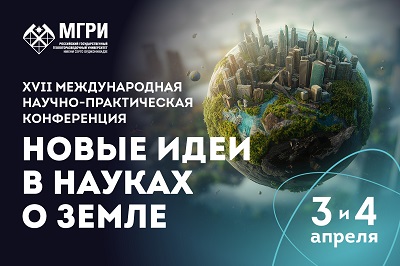Phosphate composition of uranium sooty (blacks) as indicator of their biogenic nature
https://doi.org/10.32454/0016-7762-2016-5-18-25
Abstract
About the Author
O. A. DoynikovaRussian Federation
References
1. Виниченко П.В. Теория биогенного рудообразования на примере урановых месторождений. Иркутск: Сосновгеология, 2004. 215 с.
2. Гидрогенные месторождения урана / Под ред. А.И. Перельмана. М.: Атомиздат, 1980. 270 с.
3. Дойникова О.А. Месторождения урана с новым типом черневой минерализации: фосфатным // Геология рудных месторождений. 2007. Т. 49. № 1. С. 60-78.
4. Дойникова О.А. Минералогия урана восстановительной зоны гипергенеза (по данным электронной микроскопии). М.: Физматлит, 2012. 216 с.
5. Дойникова О.А., Белова Л.Н, Горшков А.И., Сивцов А.В. Урановая чернь: вопросы генезиса и минерального состава // Геология рудных месторождений. 2003. № 6. Т. 45.
6. Дойникова О.А., Тарасов H.H., Мохов А.В. Новый фосфатный тип урановых руд в России // Доклады РАН. 2014. Т. 457. № 4. С. 434-438.
7. Кисляков Я.М., Щеточкин В.Н. Гидрогенное рудообразование. М.: Геоинформмарк, 2000. 608 c.
8. Лисицын А.К. Гидрогеохимия рудообразования. М.: Недра, 1975. 247 с.
9. Макаров М.И. Фосфор органического вещества почв. М.: ГЕОС, 2009. 370 с.
10. Мальковский В.И., Петров В.А., Диков Ю.П., Александрова Е.В. , Бычкова Я.В., Мохов А.В., Шулик Л.С. Анализ коллоидных форм переноса урана подземными водами на U-Mo месторождениях Стрельцовского рудного поля (Восточное Забайкалье) // Докл. РАН. 2014. Т. 454. № 1. С. 81-83.
11. Перельман А.И. Геохимия эпигенетических процессов (зона гипергенеза). М.: Недра. 1968. 331 с.
12. Перельман А.И., Касимов Н.С. Геохимия ландшафта. М.: Астрея-2000, 1999. 768 с.
13. Слободкин А.И. Термофильные железовосстанавливающие прокариоты. Дис.. докт. биолог. наук: 03.00.07. М., 2008. 336 с.
14. Хижняк Т.В. Бактериальная трансформация и иммобилизация тяжелых металлов и радионуклидов. Дис.. докт. биолог. наук: 03.02.03. М., 2013. 212 с.
15. Behrends T., Cappellen P. Competition between enzymatic and abiotic reduction of uranium (VI) under iron reducing conditions // Chemical Geology. 2005. 220. 315- 327.
16. Bernier-Latmani R., Veeramani H., Dalla Vecchia E. et al. Non-uraninite Products of Microbial U (VI) Reduction // Environ. Sci. Technol. 2010. 44. 9456-9462.
17. Boyle D.R., Littlejohn A.L., Roberts A.C. et al. Ningyoite in Uranium deposits of south central British-Columbia first North American occurrence // Canad. Miner. 1981. V. 19. № 4. P. 325-331.
18. Calas G., McMillan P.F., Bernier-Latmani R. Environmental Mineralogy: New Challenges, New Materials // Elements. 2015. V. 11. P. 247-252.
19. Cerrato J.M., Ashner M.N., Alessi D.S. et al. Relative reactivity of biogenic and chemogenic uraninite and biogenic noncristalline U (IV). Environ. Sci. Technol. 2013. 47: 9756-9763.
20. Kajitani K. A geochemical study on the genesis of ningyoite, the special calcium uranous phosphate mineral // Economic Geology. 1970. V. 65. P. 470-480.
21. Lezama-Pacheco J.S. Cerrato J.M., Veeramani H. et al. Long-Term in Situ Oxidation of Biogenic Uraninite in an Alluvial Aquifer: Impact of Dissolved Oxygen and Calcium // Environ. Sci. Technol. 2015. 49. 7340-7347. DOI: 10.1021/ acs.est.5b00949
22. Lovley D.R., Phillips E.J.P., Gorby Y.A., Landa E.R. Microbial reduction of uranium // Nature. 1991. V. 350. P. 413-416.
23. Min M, Xu H, Chen J, Fayek M. Evidence of uranium biomineralization in sandstone-hosted roll-front uranium deposits, northwestern China // Ore Geology Reviews. 2005. 26: P. 198-206.
24. Priyadarshini N., Sampath M., Shekhar Kumar et al. Probing Uranium (IV) Hydrolyzed Colloids and Polymers by Light Scattering // Journal of Nuclear Chemistry. 2014. Volume 2014. Article ID 232967. http://dx.doi.org/10.1155/2014/232967.
25. Singer D.M., Farges F., Brown G.E.Jr. Biogenic nanoparticulate UO2: Synthesis, characterization, and factors affecting surface reactivity // Geochim. Cosmochim. Acta. 2009. 73 (12): P. 3593-3611. DOI: 10.1016/j.gca.2009.03.031.
26. Sivaswamy V., Boyanov M.I., Peyton B.M. et al. Multiple Mechanisms of Uranium Immobilization by Cellulomonas sp.Strain ES6 // Biotechnol. Bioeng. 2011. 108(2): P. 264-276.
27. Southam G., Sanders J.A. The geomicrobiology of ore deposits // Economic Geology. 2005. 100: P. 1067-1084.
28. Suzuki Y., Kelly S.D., Kemner K.M., Banfield J.F. Direct microbial reduction and subsequent preservation of uranium in natural near-surface sediment // Appl. Environ. Microbiol. 2005. 71(4): P. 1790-1797.
29. Zammit C.M., Shuster J.P., Gagen E.J., Southam G. The Geomicrobiology of Supergen Metal Deposits // Elements. 2015. V. 11. P. 337-342.
30. Wang Y., Frutschi M., Suvorova E et al. R. Mobile uranium (IV)-bearing colloids in a mining-impacted wetland. Nature Communications. 2013. 4: DOI: 10.1038/ncomms3942.
31. Wulser P-A., Brugger J., Foden J., Pfeifer H-R. The sandstone-hosted Beverley uranium deposit, Lake Frome Basin, South Australia: Mineralogy, geochemistry, and a time-constrained model for its genesis // Economic Geology. 2011. № 106: Р. 835-867.
Review
For citations:
Doynikova O.A. Phosphate composition of uranium sooty (blacks) as indicator of their biogenic nature. Proceedings of higher educational establishments. Geology and Exploration. 2016;(5):18-25. (In Russ.) https://doi.org/10.32454/0016-7762-2016-5-18-25








































